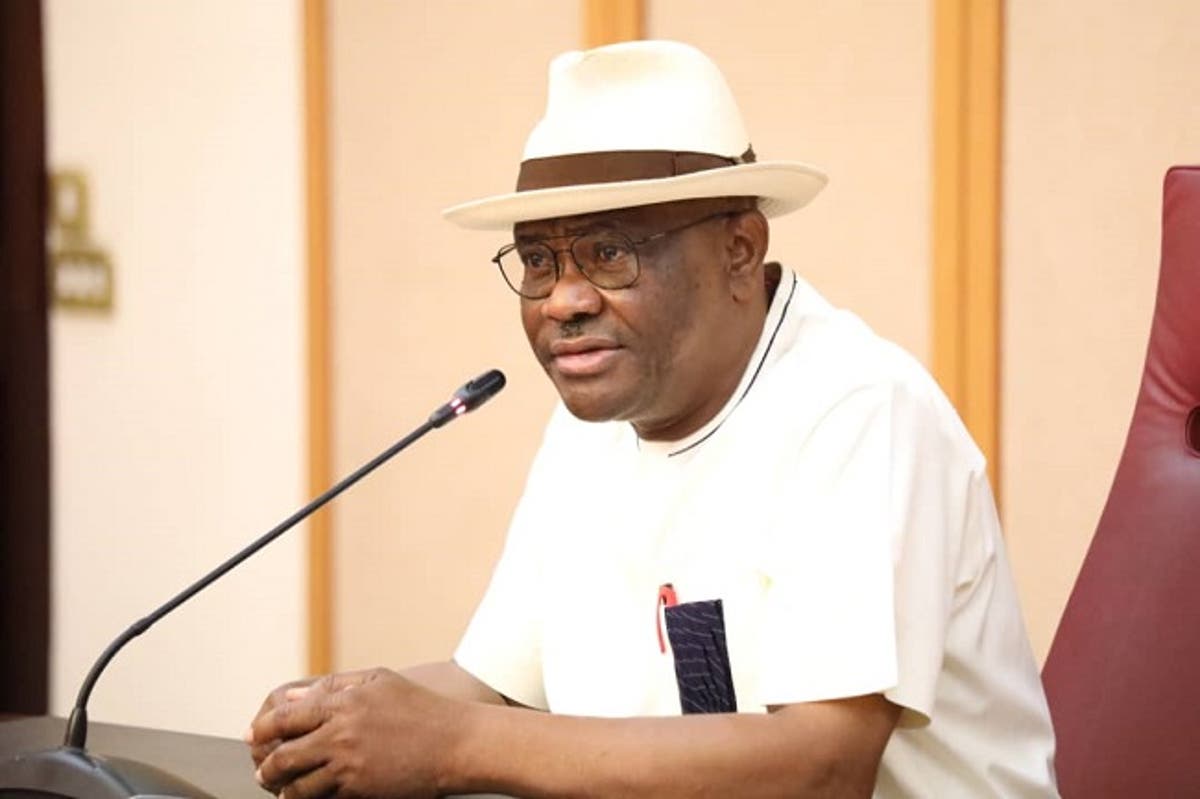Op-ed
Trump may not make it to the primaries

- JD Vance breaks polling records in the worst way - July 25, 2024
- Donald Trump’s Losing Election Poll for First Time in Over a Month - July 25, 2024
- FBI Is Not Fully Convinced Trump Was Struck by a Bullet - July 25, 2024
Anthony Obi Ogbo
Sylvester Turner Should Cancel His Bid for Late Jackson Lee’s Congressional Seat
“Running an election alongside his mentees might be seen as a selfish but insatiable appetite for office.“ —Anthony Ogbo
Former Mayor Sylvester Turner has expressed serious interest in running for the late Rep. Sheila Jackson Lee’s congressional seat. In an interview with KHOU, Turner stated that the passing of his friend (Sheila) has prompted him to consider coming out of retirement for this critical opportunity. A decision from the former mayor is expected in the coming days.

74-year Jackson Lee, a prominent figure in Houston politics, passed away last week after revealing her battle with pancreatic cancer earlier this year. She had represented the 18th Congressional District since 1995, earning a reputation for her unwavering dedication and frequent presence at community events within the district.
Among other declared and potential Democratic candidates vying for Jackson Lee’s seat are state Rep. Jarvis Johnson, Houston Councilwoman Letitia Plummer, and Amanda Edwards, who placed second in the district’s original primary.
The news of Turner’s potential consideration for a congressional position has sparked surprise among Houstonians, particularly his community supporters. However, there is a noticeable silence surrounding the topic, with many engaging in hushed conversations and speculation. The mere idea of transitioning to a fast-paced congressional role raises concerns about the potential impact on the community and his supporters, who are unsure about his physical well-being.
At 69 years old, Turner is a seasoned attorney, activist, and politician who recently concluded a tumultuous 8-year term in office. But his departure in January was marked by health concerns. He had battled bone cancer in his jaw, undergoing surgery and six weeks of radiation therapy in 2022. This ailment not only forced him to cancel an official trip to France but also led to his absence from City Council meetings for several weeks.
There is currently a discussion surrounding the potential for Turner to assume a new role in Congress because his health issues cast doubt on his capacity to fulfill the responsibilities of this position. This has elicited a range of emotions among observers, with some expressing concern about his ability to effectively manage the demands of the role. Despite his experience and dedication to public service, concerns linger about his physical stability and capacity, to effectively represent constituents in a more demanding political arena.
Turner’s consideration to vie for Sheila Jackson Lee’s congressional seat also reveals a poignant irony. Jackson Lee tragically passed away while juggling the demands of her congressional responsibilities and battling a deadly form of cancer. Despite undergoing treatment for pancreatic cancer, she tirelessly worked to support her constituents during the aftermath of Hurricane Beryl. For over two weeks, Jackson Lee stood up for the thousands of individuals in her district who were left vulnerable without power.
Some members of the community believed that Jackson-Lee should have retired after her cancer diagnosis. However, her passing could serve as a lesson to other long-serving public officials who would neglect their health in pursuit of power and public service.
The impact of politics on physical, psychological, and social health is a reality that cannot be denied. Recently, President Joe Biden decided to withdraw from the 2024 presidential race after facing intense pressure, speculation, and internal turmoil within his own Democratic Party. Concerns about his health, both physical and cognitive, have been a constant focus in recent weeks, especially his lackluster performance at the June 27 presidential debate. This situation highlights the toll that politics can take on individuals at the highest levels of government.
Public officials need to prioritize their health and well-being, as neglecting it can have serious consequences. Serving the public is a noble calling, but it should not come at the expense of one’s own health. Jackson-Lee’s passing should remind all public servants of the importance of retirement. It serves as a sobering reminder that life is precious and unpredictable and that it is essential to prioritize self-care and well-being to enjoy a fulfilling retirement after years of dedicated service.
Ultimately, Jackson-Lee’s passing should inspire Turner to take proactive steps toward sustaining his happy and healthy retirement. He should reconsider his bid for Jackson Lee’s Congressional Seat. At this point in his career, it may be more beneficial for him to contemplate retirement and offer his support to other candidates who have long been supporters of his campaign during his political career. Running an election alongside those mentees might be seen as a selfish but insatiable appetite for office.
♦Publisher of the Guardian News, Professor Anthony Obi Ogbo,PhD, is on the Editorial Board of the West African Pilot News. He is the author of the Influence of Leadership (2015) and the Maxims of Political Leadership (2019). Contact: anthony@guardiannews.us
- JD Vance breaks polling records in the worst way - July 25, 2024
- Donald Trump’s Losing Election Poll for First Time in Over a Month - July 25, 2024
- FBI Is Not Fully Convinced Trump Was Struck by a Bullet - July 25, 2024
Anthony Obi Ogbo
Was Trump’s Assassin unstoppable because he was White?
“It is worth considering whether Trump’s assassin would have been treated differently if he were Black.“ —Anthony Ogbo
On Saturday, July 13, a gunman, 20-year-old Thomas Matthew Crooks, armed with an AR-15 assault rifle, brazenly carried his killer weapon to the rooftop from a short distance to the podium where the former President, Donald Trump was addressing a political rally. Unchallenged, he fired up to eight shots toward the stage, with one shot hitting Trump’s right ear. Tragically, one rally-goer died, and two others were critically injured before the assailant was taken down by a Secret Service sniper. The shooter was identified as white.

Just a few days later, on Tuesday, five Columbus police officers in Milwaukee shot and killed a homeless man outside the security perimeter of the Republican convention. The man was waving knives at others, and residents reported that he had been living in a tent. To be precise, this incident took place about 1 mile from the convention in a residential neighborhood that included a large homeless encampment. The homeless man was Black.
Since the incident involving Trump, investigators have been diligently working to determine the cause of the attack and prevent future occurrences. They have explored various theories and possibilities as they come to terms with how the individual was able to conveniently carry out such a heinous act.
Attendees at the event had alerted local police about the shooter heading towards the rooftop. However, authorities failed to communicate this information to security personnel, potentially jeopardizing the safety of the former President. A Homeland Security law enforcement memo revealed that the shooter had recently purchased ammunition, received hazardous material shipments, and had improvised explosive devices in his car and home.
It was also reported that before the would-be assassin aimed at Trump, attendees reported they saw him pacing and behaving strangely. Crooks was not shot, rather, local police officers began pursuing him on foot. During the pursuit, the U.S. official said, local police told the Secret Service they were looking for a suspicious person near the event. Furthermore, the U.S. official said the Secret Service was told of a suspicious person before local police discovered Crooks on the roof of a nearby glass research company’s building. That discovery occurred shortly before Crooks opened fire, according to law enforcement sources.
The timing of these events raises concerns about whether additional precautions could have been implemented to prevent Crook’s actions. It is worth considering whether this assassin would have been treated differently if he had been Black. Comparing both events can provide insight into potential biases and disparities in treatment based on race.
The fact that the suspect in Trump’s assassination attempt in Pennsylvania was White and was handled with such reluctance and oversight, while the Black homeless man in Milwaukee was shot and killed instantly by police, highlights the disparities in how individuals of different races are treated by law enforcement. This raises questions about whether race played a role in how both incidents were handled and whether there are underlying biases that need to be addressed within the criminal justice system.
Authorities claimed that the fatal shooting in Milwaukee was not connected to the convention. However, this incident sheds light on larger concerns regarding the use of external law enforcement for events such as conventions. Furthermore, it is important to examine these cases closely and consider how systemic racism may be influencing outcomes in similar situations. By acknowledging these disparities, we can work towards creating a more just and equitable society for all individuals, regardless of their race.
Despite efforts to address systemic racism and improve police-community relations, recent events such as the killings of George Floyd, Breonna Taylor, and Daunte Wright have highlighted the ongoing challenges and injustices faced by Black Americans at the hands of law enforcement. These incidents serve as a stark reminder that there is still much work to be done to achieve true equality and justice for all individuals, regardless of race. It is clear that while progress has been made in some areas, the reality on the ground continues to show that racial disparities and police brutality remain pervasive issues in America.
♦Publisher of the Guardian News, Professor Anthony Obi Ogbo,PhD, is on the Editorial Board of the West African Pilot News. He is the author of the Influence of Leadership (2015) and the Maxims of Political Leadership (2019). Contact: anthony@guardiannews.us
- JD Vance breaks polling records in the worst way - July 25, 2024
- Donald Trump’s Losing Election Poll for First Time in Over a Month - July 25, 2024
- FBI Is Not Fully Convinced Trump Was Struck by a Bullet - July 25, 2024
News
Rivers State crisis: Expel Wike, FCT Minister from PDP now

♦ Uzoma Ahamefule, a refined African traditionalist and a patriotic citizen writes from Vienna, Austria. WhatsApp: +436607369050; Email Contact Uzoma >>>>
- JD Vance breaks polling records in the worst way - July 25, 2024
- Donald Trump’s Losing Election Poll for First Time in Over a Month - July 25, 2024
- FBI Is Not Fully Convinced Trump Was Struck by a Bullet - July 25, 2024
-

 Anthony Obi Ogbo2 days ago
Anthony Obi Ogbo2 days agoSylvester Turner Should Cancel His Bid for Late Jackson Lee’s Congressional Seat
-

 Anthony Obi Ogbo1 week ago
Anthony Obi Ogbo1 week agoWas Trump’s Assassin unstoppable because he was White?
-

 Column2 days ago
Column2 days agoAdvocating for Reviving the 1960s Constitution Toward Creating a United Region of Nigeria
-

 News2 weeks ago
News2 weeks agoOMG: Donald Trump Shooter Was a Registered Republican
-

 Lifestyle2 weeks ago
Lifestyle2 weeks agoEddie Murphy and Paige Butcher Are Married! Inside Their Private Caribbean Wedding
-

 News2 weeks ago
News2 weeks agoDonald Trump survives assassination attempt; FBI identifies shooter
-

 Houston2 weeks ago
Houston2 weeks agoHurricane Beryl: Wazobia postpones family fanfare slated for this weekend
-

 Lifestyle2 weeks ago
Lifestyle2 weeks agoYale honors a young Black scientist after a neighbor falsely reported the 9-year-old to the police




















